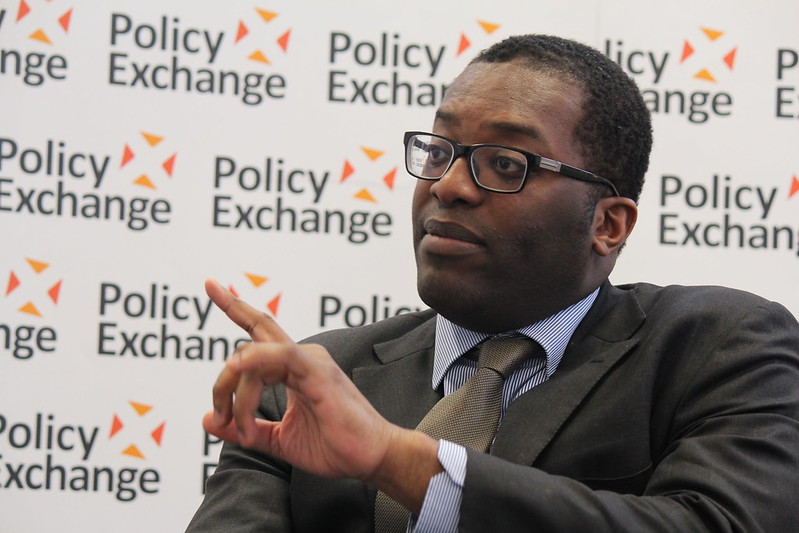The invitation to the winter reception held in London this week by the U.K. government’s all-party parliamentary group for renewable and sustainable energy (Praseg) stated energy minister Kwasi Kwarteng would give “a keynote address reflecting on U.K. leadership on renewable and sustainable energy and outlining his aspirations for the sector in the future”.
Despite that promise, little of substance was offered at the House of Commons event on Tuesday other than a vague low-carbon aspirations.
Kwarteng began his speech by reflecting on the country retiring its coal-fired power fleet, stating: “In 1913, the U.K. mined 287 million tons of coal and, in 100 years, we are now off coal – a remarkable achievement.”
pv magazine understands the U.K. still operates four major coal-fired power stations, one of which – Fiddler’s Ferry in Cheshire, northwest England – is due to go offline in March. Coal-fired power supplied 5.1% of U.K. electricity in 2018 and that figure is expected to have fallen a further 2% last year after the Cottam plant in Nottinghamshire, in the English east midlands, closed in the autumn and the Aberthaw B power station, near Barry in South Wales, was shuttered in December. The government has committed to ending all “unabated” coal-fired generation by 2025 and this month said it would consult on bringing that deadline forward to October 1, 2024.
With the Conservative government of Theresa May having committed to a net-zero carbon economy by 2050 – in one of the final acts of a Brexit-riven administration – Kwarteng voiced his concern about emissions from the housebuilding sector and the urgency of decarbonizing space heating.
“These are the challenges I think [of] as a minister every day,” he added. “We are on a journey [towards a sustainable energy system] and we try to bring the population together with us.”
It was left to members of the new intake of MPs elected in December to offer encouragement to representatives of the solar sector and wider energy community in the audience.
Window of opportunity?
Popular content
Lia Nici, Conservative MP for Great Grimsby in the English North East, spoke about new buildings installing renewable energy technologies so “we don’t have to retrofit in 10 years’ time”.
Her remarks came after the Ministry of Housing, Communities and Local Government in October opened a consultation related to its proposed Future Homes Standard. Specifically, the ministry asked for feedback about ‘part L’ of the standard – which concerns the conservation of fuel and power in new dwellings – and the consultation closed on Friday with the government’s preferred option to publish part L in the middle of the year and bring its provisions into force by the end of the year.
The U.K. Solar Trade Association (STA) welcomed the part L proposals which consider two alternative legislative options to improve energy efficiency in building standards.
The ‘Future Homes Fabric’ standard would deliver a 20% reduction in carbon emissions by mandating “very high fabric standards” and the ‘Fabric plus technology’ option would deliver a 31% emissions reduction “through a more minor increase to fabric standards alongside use of low-carbon heating and/or renewables, such as photovoltaic panels,” said the consultation document. The latter is the government’s preferred option because it “would deliver more carbon savings and result in lower bills for the householder,” added the document. Shifting some of the burden onto clean energy installations would also placate the U.K.’s powerful housebuilding lobby, which can be expected to resist any move towards more stringent building standards.
Newly-elected Labour MP for Sheffield Hallam, Olivia Blake, told the Praseg gathering community energy is a key issue which needs support. Her Labour colleague for Leicester East, Claudia Webbe, added solar rooftops should also be part of the U.K.’s future energy system.
Given the Conservative government’s apparent lack of enthusiasm for solar, however, any Future Homes Standards decision to use solar panels to help make new homes more energy efficient appears the more likely source of relief for the beleaguered sector.
This content is protected by copyright and may not be reused. If you want to cooperate with us and would like to reuse some of our content, please contact: editors@pv-magazine.com.


1 comment
By submitting this form you agree to pv magazine using your data for the purposes of publishing your comment.
Your personal data will only be disclosed or otherwise transmitted to third parties for the purposes of spam filtering or if this is necessary for technical maintenance of the website. Any other transfer to third parties will not take place unless this is justified on the basis of applicable data protection regulations or if pv magazine is legally obliged to do so.
You may revoke this consent at any time with effect for the future, in which case your personal data will be deleted immediately. Otherwise, your data will be deleted if pv magazine has processed your request or the purpose of data storage is fulfilled.
Further information on data privacy can be found in our Data Protection Policy.